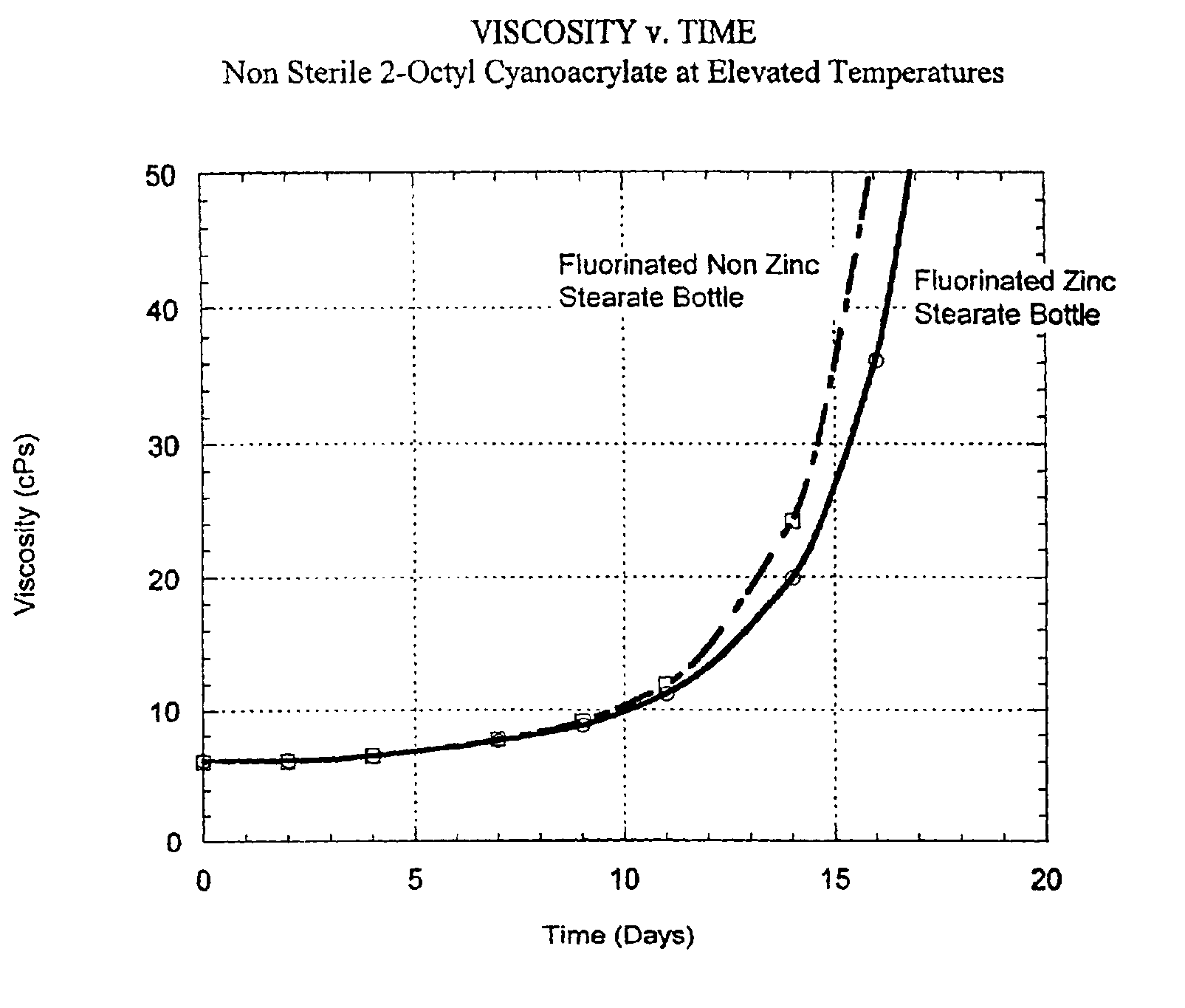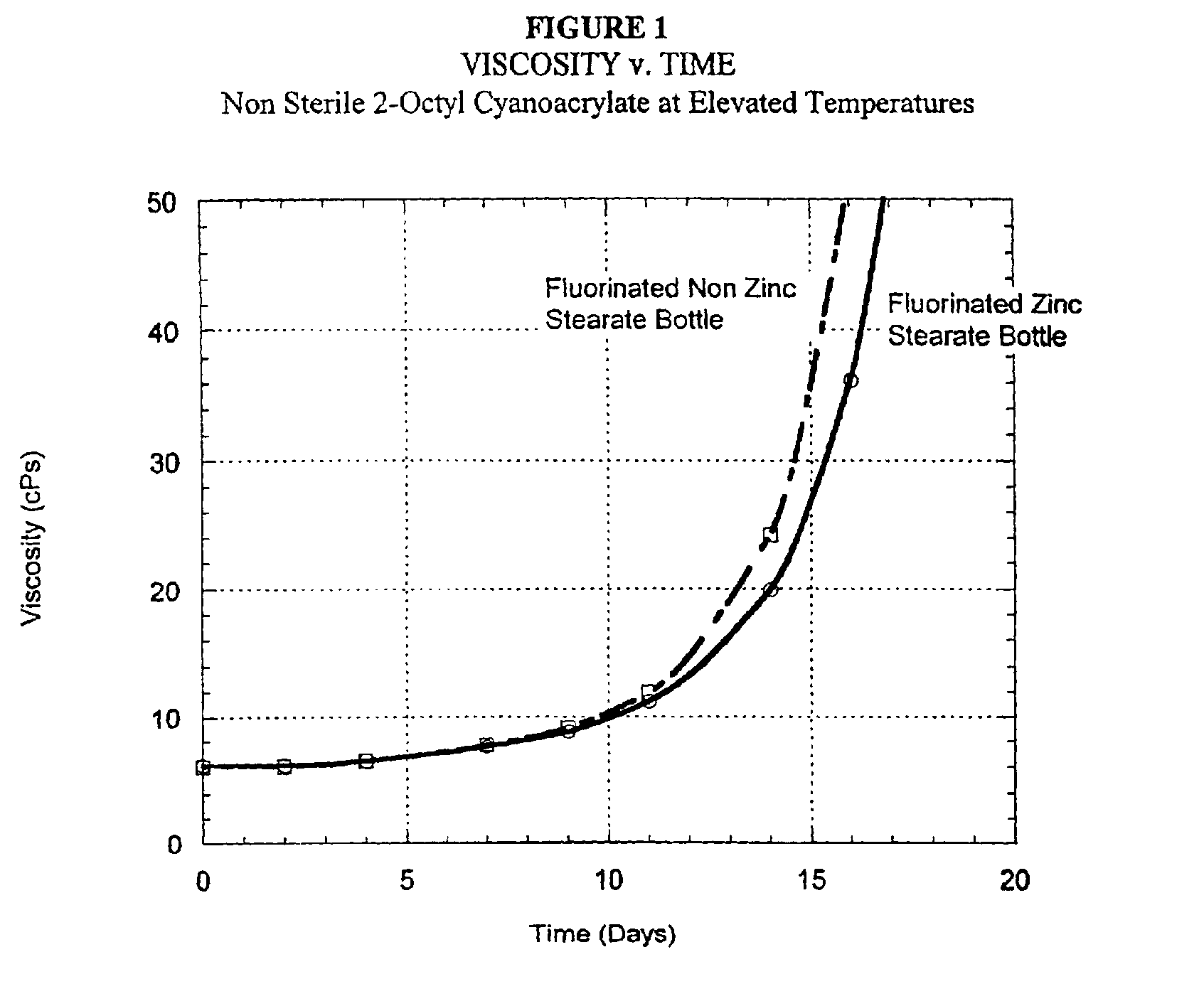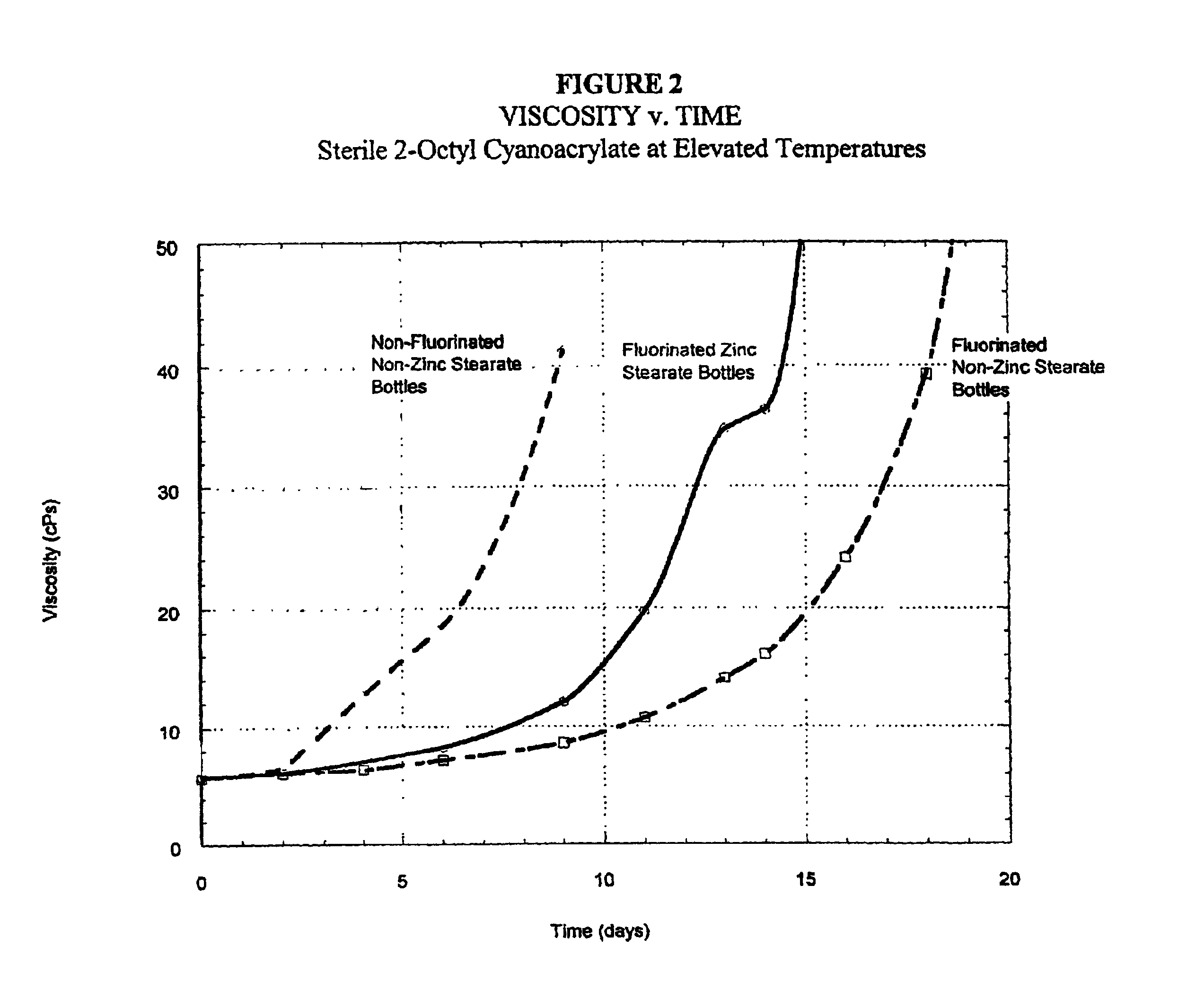Halogenated polymeric containers for 1, 1-disubstituted monomer compositions
a monomer composition and halogenated polymer technology, applied in the direction of rigid containers, containers preventing decay, synthetic resin layered products, etc., can solve the problems of reduced shelf life and unacceptable shelf life of the combination of containers and products, so as to facilitate the release of a shaped object, facilitate the flow of plastic, and facilitate the effect of container manufacturing
- Summary
- Abstract
- Description
- Claims
- Application Information
AI Technical Summary
Benefits of technology
Problems solved by technology
Method used
Image
Examples
example
[0082]Formulations comprising 2-octyl cyanoacrylate are deposited into three different types of containers. The first type of container is a high density polyethylene bottle that does not contain zinc stearate. The second type of container is a fluorinated high density polyethylene bottle that contains zinc stearate. The third type of container is a fluorinated high density polyethylene bottle that does not contain zinc stearate. A portion of the bottles containing formulation are sterilized by exposure to electron beam radiation. The bottles are randomly placed in polypropylene bins. The bins are placed in either an oven set to an elevated temperature or an environmental chamber set to a temperature of 40° C. and a relative humidity of 75%. The formulations are periodically tested for viscosity.
[0083]FIG. 1 illustrates the viscosity of the non-sterilized formulations as a function of time for the zinc stearate-containing fluorinated high density polyethylene bottles and for the zin...
PUM
| Property | Measurement | Unit |
|---|---|---|
| volumes | aaaaa | aaaaa |
| temperature | aaaaa | aaaaa |
| density | aaaaa | aaaaa |
Abstract
Description
Claims
Application Information
 Login to View More
Login to View More - R&D
- Intellectual Property
- Life Sciences
- Materials
- Tech Scout
- Unparalleled Data Quality
- Higher Quality Content
- 60% Fewer Hallucinations
Browse by: Latest US Patents, China's latest patents, Technical Efficacy Thesaurus, Application Domain, Technology Topic, Popular Technical Reports.
© 2025 PatSnap. All rights reserved.Legal|Privacy policy|Modern Slavery Act Transparency Statement|Sitemap|About US| Contact US: help@patsnap.com



